OSH x BFI Future Film Festival
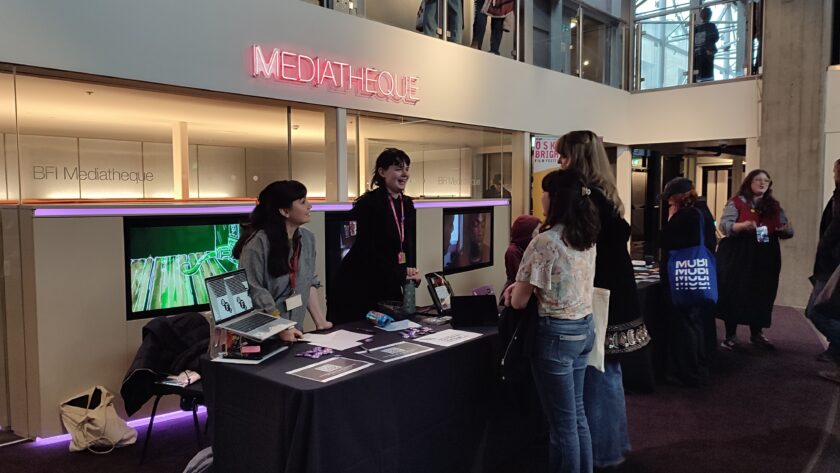
On Thursday 20 February the Our Screen Heritage Contemporary Collecting team had the chance to meet some aspiring filmmakers at the BFI Future Film Festival day-one marketplace.
The marketplace brings together companies from a range of sectors in the screen industries: film schools, festivals, training and equipment providers and much more, a chance for festival attendees to meet people and find out a bit more about possible routes into the industry. The BFI Reuben Library have a stand too, to introduce their work and collections, and this year we planted a flag for the BFI National Archive, using the pull of our current work around collecting online moving image to talk to some very driven, put-together young people who were there ready to ask questions and make connections. We had Badgers, BFI Replay badges, grapes and HobNobs, and our trusty QR code to encourage attendees to share their thoughts on what we could explore in our acquisitions.
All in all we spoke with around 75 young people, some looking to make their own films, some already making their own films, some looking for career development opportunities, some with no set plans for the day, and some genuinely curious to hear (a few of them for the first time!) about the work of the BFI National Archive, about collecting, curating, digital and film preservation, and how we present archive moving image. We guided them towards the BFI Mediathèque, to their local libraries for BFI Replay, to the free-to-watch collections on BFI Player – and of course to the Inside the Archive blog.
Thanks to everyone who put in a shift on the stall, and to the BFI Future Film Festival team for giving us a spot at such a smoothly-run event.
– Kitty Robertson, Assistant Curator (Our Screen Heritage)
Building a Long-Term Career in Online Moving Image event

Towards the tail end of last month, I had the pleasure of sitting down and speaking with YouTube cultural critic, author and advocate Rowan Ellis as part of the BFI Future Film Festival’s ‘Career Ladder’ strand of events.
I worked with Rowan years ago while I was producing a series of video essays for BBC iPlayer, but back then we didn’t get a chance to meet face to face (such is the way with online video!). So when my colleague Kitty Robertson (Assistant Curator, Our Screen Heritage) proposed that I host a ‘fireside chat’-style event with Rowan for this year’s Future Film Festival, I jumped at the chance.
The plan was to talk through Rowan’s decade-plus career making in-depth and accessible video essays on pop culture and LGBTQ history on YouTube, tying in with Rowan’s recent donations to the BFI National Archive as part of the OSH project’s new collection of online video work.
I had to battle through rail replacement bus services across the wilds of Sussex to get up to London on the day, but it was well worth the trip. The BFI Future Film Festival is always an inspiring space, with BFI Southbank transformed and energised by scores of impassioned young delegates engaging with a varied programme of talks, workshops and screenings.
Our event was fully sold out, and Rowan was as generous and insightful as ever, talking about her journey from hobbyist to professional powerhouse: how her content was shaped by the sometimes strict demands of the platform, how she developed and maintained a community around her work (including the benefits of not going viral), and the joys of watching YouTube videos at 1.5x speed.
Perhaps most useful for the Future Film Festival youngsters in the audience was Rowan pulling back the curtain and laying out the production process behind her videos, and revealing the many ‘below the line’ craft roles that exist behind what may look like a simple ‘to-camera’ YouTube video, from sound editors and videographers, to visual effects artists and researchers.
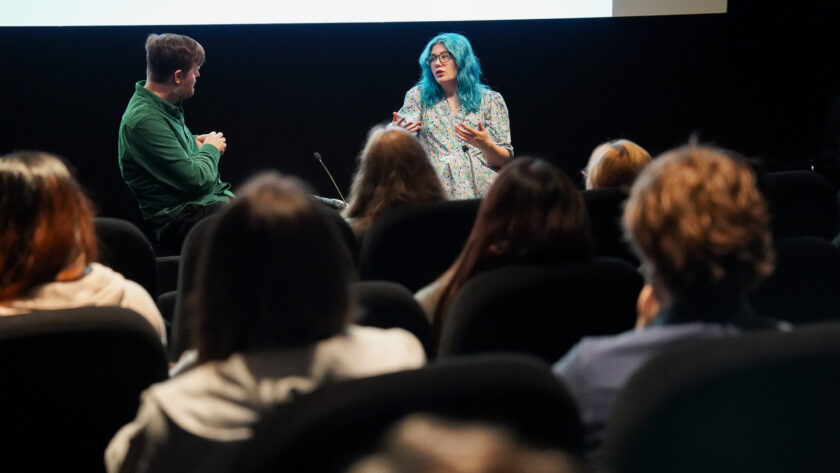
We could have easily talked for hours, but we only had 60 minutes, which flew by. Nevertheless, we were brought right up to date with a clip from Rowan’s latest work, an incisive investigation into the legacy of TV makeover shows from the early 2000s on “today’s beauty-obsessed world”.
We were all left with plenty to chew on, including questions Rowan raised about the wider ‘legitimacy’ of the online video essay in the eyes of the powers-that-be, and the genre’s place in the nook between the more formal screen industries and the world of academia. Could the institutional interest in online video around the National Archive’s new collection help shift the standing of an artform? Time will tell.
Rowan’s work can be found on her YouTube channel, and two of her donated works can now be found in the BFI Mediatheque in the Online Video curated collection.
– Michael Leader, Curator (Archive Platforms)
Death data updates from the Graveyard Shift
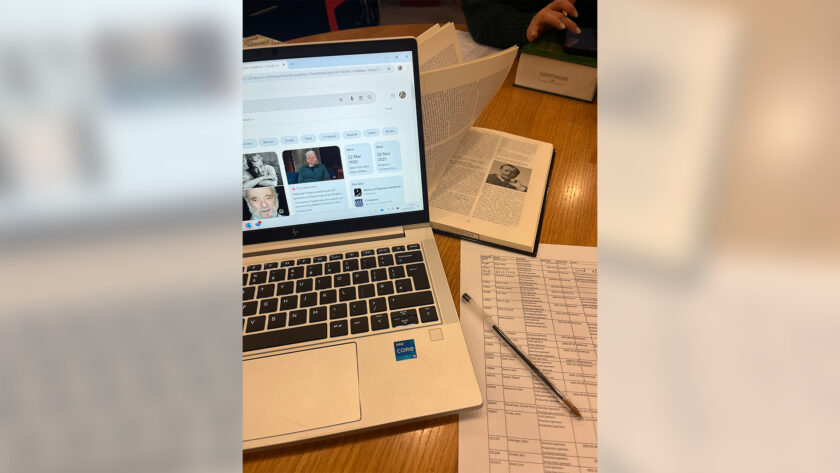
In Week 11 Molly talked about The Graveyard Shift, a public research event held at the BFI Reuben Library that was a great collaborative effort between BFI staff and the public to provide verified death information to update into the BFI’s Collections Information Database (CID). So why were we asking the public to lightly delve into the morbid to tell us the when and where, thankfully not the how, of death data for key figures in filmmaking roles?
Death date, along with birth and other biographical descriptive data about a person, is stored in a Persons and Institutions database in CID. The P&I database is where we create and maintain name records for people and organisations associated with moving image records in the collection, the likes of directors, actors, animators, production companies, scriptwriters…to name a few.
Updating person records with death dates is extremely useful for the BFI as it enriches the data in the system but also enhances our copyright knowledge, potentially allowing the widening of access to new parts of the collection. Death data comes into play as copyright ownership for film in the UK ends 70 years when the death of the last of the following: the principal director, the author of the screenplay, the author of the dialogue, the composer of music made especially for the film.
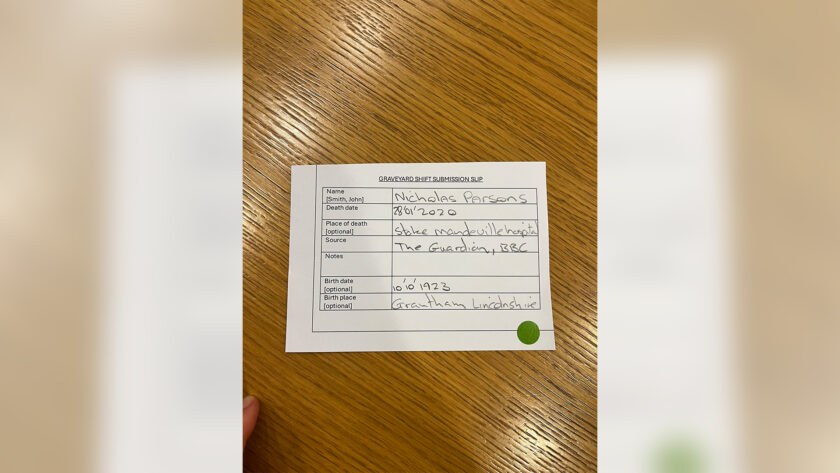
During the event, we specifically gathered the date of death, the place (if known), and the source of the data. It was interesting to see the variety of sources being provided ranging from obituaries in newspapers, to books in the Reuben Library or entries from the BFI’s Press Cuttings collection, to online catalogues from other international film archives, and even photographs of tombstones via findagrave.com.
The final count from the event has totalled 286 updates to person records in the database, which is an incredible achievement for all the teams involved and a great result in the continued enrichment of the BFI’s data. It was a joy to see the engagement and enthusiasm of everyone at the event; we even had some attendees take research home and received results later via email! The Graveyard Shift was a resounding success so look out for announcements of similar events in the future.
– Nicola Regan, Systems Support Specialist
NFTS placement update
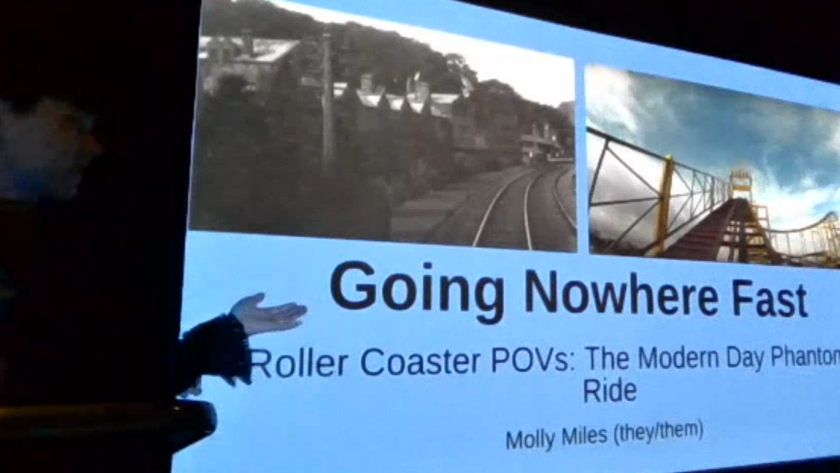
For the past five weeks, I have been interning within the Our Screen Heritage (OSH) team via my Film Studies, Programming and Curation MA course at the NFTS. My colleagues on the course have been across Southbank and Stephen Street, working in a wide range of departments as highlighted in Kristina’s blog post. I have been exploring a variety of areas of online moving image, engaging in nourishing research and filling in lots of spreadsheets.
My primary focus of my time at the BFI has been around roller coaster POVs and phantom rides. One of the most exciting aspects of the OSH project is the link between early cinema and online moving image. Roller Coaster POVs, where a person films a roller coaster going around a track, have a link with Phantom Ride videos. These early cinema films had a person holding a camera strapped to a train filming the track as it went around. This week, I did a presentation at Stephen Street – ‘Going Nowhere Fast: Roller Coaster POVs and Phantom Rides’, which was a collation of my research into this subgenre of online videos. It was lots of fun, and it felt great to be able to present my ideas around this topic to a team from across the BFI.
I am amazed at how quickly my time at the BFI has gone – it feels like only last week I was googling the word symposium to find out what a symposium was. The symposium was truly wonderful, an informative and engaging day during which I felt incredibly proud to be part of the team. In my own small way I helped. Stationed at the bottom of the stairs, I made sure that a group of 500 school children who had just spent 2 hours on a coach, and who were being ferried into NFT1 to sit down for even longer, did not get carried off into the symposium crowd. For two of the panels I did the roving mic, but I was lucky enough that I got to watch all of the speakers and fully absorb the day.
My time at the BFI has changed my preconceptions of the institution, and I will miss working on OSH when my internship is over!
– Molly Miles, NFTS Placement
Photographing the archive
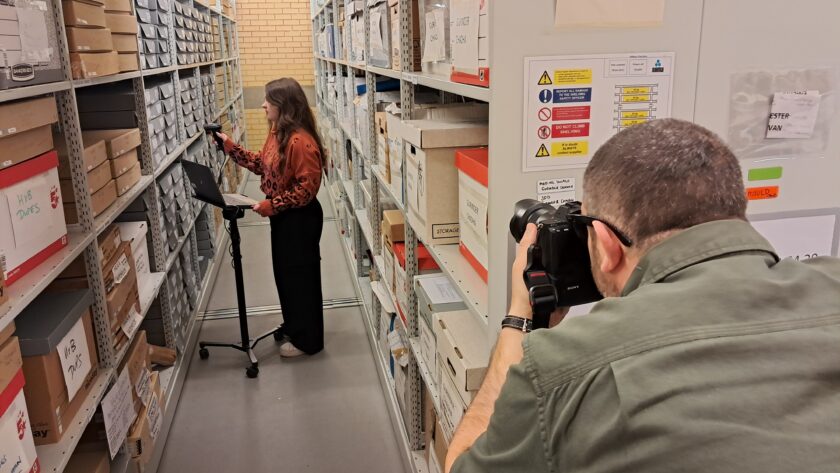
How we illustrate the work of the BFI National Archive is vitally important. With practices and processes ever-evolving, it’s also important that we continually refresh our suite of photography, so that we’re accurately depicting all areas of work.
Last week, I had the pleasure of accompanying photographer Adam Bronkhorst around the Conservation Centre. We visited the Special Collections and Collections Development teams, capturing images of various archival activities that were missing from our range of promotional images.
We captured some great (and very striking!) new images, which we look forward to sharing on the blog and beyond soon.
– Alex Prideaux, Marketing Manager (Our Screen Heritage)
The Inside the Archive blog is supported by the BFI Screen Heritage Fund, awarding National Lottery funding.
